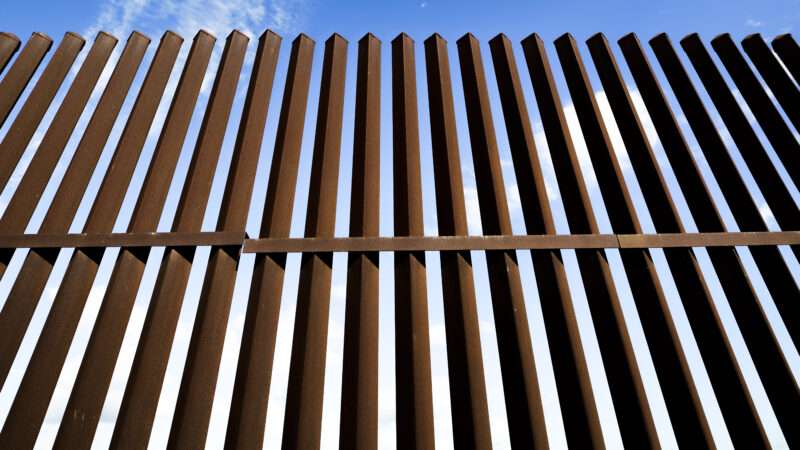
The Centers for Disease Control and Prevention (CDC) announced today that it would lift a controversial public health order that permitted U.S. Customs and Border Patrol (CBP) officials to immediately expel migrants crossing land borders in order to stop COVID-19's spread.
"[The] CDC has determined that a suspension of the right to introduce such covered noncitizens is no longer necessary to protect U.S. citizens, U.S. nationals, lawful permanent residents, personnel and noncitizens at the ports of entry (POE) and U.S. Border Patrol stations, and destination communities in the United States," read the agency's order. The policy change will take effect on May 23.
Under the Public Health Services Act of 1944, codified in Title 42 of the U.S. Code, federal health officials may issue orders intended to curb the cross-border spread of diseases. Rarely invoked before the pandemic, Trump administration officials looked to Title 42 in late March 2020 as a way to stop migrants from crossing U.S. land borders. Would-be migrants could no longer cross into the United States from Canada and Mexico after the CDC's Title 42 order, ostensibly because they posed contagion risks. The order has been used almost exclusively to expel migrants at the southern border, and CBP officials have carried out 1.7 million expulsions under its authority.
Its implementation has proven to be largely counterproductive and harmful to migrants. Those expelled under Title 42 faced nearly 10,000 incidents of kidnapping, torture, rape, and other violence after being sent to dangerous border towns in Mexico, according to Human Rights First. What's more, because Title 42 does not penalize repeat crossings, the recidivism rate rose and the total number of CBP apprehensions spiked. This led to inflated reports of chaos and unprecedented migration at the U.S.-Mexico boundary, which only helped fuel the false argument that President Joe Biden is overseeing an open southern border.
Immigration advocates have long criticized the public health order for the barriers it poses to asylum seekers. Under U.S. immigration law, migrants are legally permitted to seek asylum—a process they must begin either on American soil or at a port of entry. An immediate expulsion under Title 42 means that migrants can't present their cases for asylum, risking a return to the dangerous conditions many of them have fled.
From the very beginning, public health officials have questioned the efficacy of Title 42 in curbing the spread of COVID-19, noting that the virus was already spreading in American communities and that migrants posed a comparatively minor risk. The CDC's director of Global Migration and Quarantine, Martin Cetron, refused to support the Trump administration's initial order. Lawyers at the Department of Health and Human Services and CBP pressured the CDC to issue the order, but the agency refused until former Vice President Mike Pence ordered the borders closed. Since that initial scuffle, more than three-quarters of Americans have received at least one COVID-19 vaccine dose, making the health order's stated justification even more tenuous.
The Biden administration previously fought to uphold the Title 42 order, despite its shaky medical basis and conflicts with longstanding asylum law. This commitment to the border measure was made even more confusing by the order's politically motivated origins, as well as its architect. The Associated Press reported in October 2020 that Trump adviser Stephen Miller, an anti-immigration hardliner, had pushed for the order.
At least internally, CBP officials have conceded that migrants should not be uniformly kicked out of the U.S. "The CBP is permitted under Title 42 to make exceptions…on a case-by-case basis," read an internal memo obtained by Politico. Border officials have begun to carve out exceptions to the order for Ukrainians in recent weeks, recognizing the cruelty of expelling migrants who have fled grave danger and persecution. If Title 42 were truly about protecting American public health interests, these exceptions would not be permitted.
As the Biden administration phases out its Title 42 order, both the government and hopeful migrants face a few major challenges. CBP may face capacity issues in processing newcomers, as federal officials expect that migration could spike in response to the order's repeal. On the migrant side, Biden officials may very well lean into the still-active "remain in Mexico" policy, which relegates migrants to Mexico to await U.S. immigration court dates. Though the order's end is good news for immigration advocates, it remains to be seen how long the legal asylum-seeking process will take to recover after two years of Title 42's damage.
The post Biden Administration Will Lift Title 42 Order Used To Expel Migrants appeared first on Reason.com.







